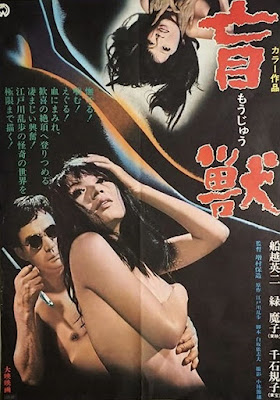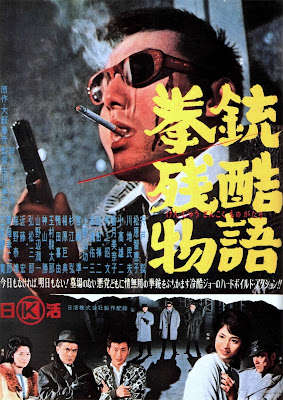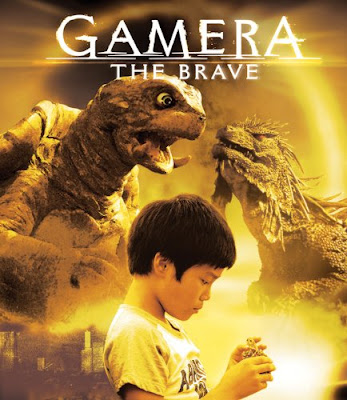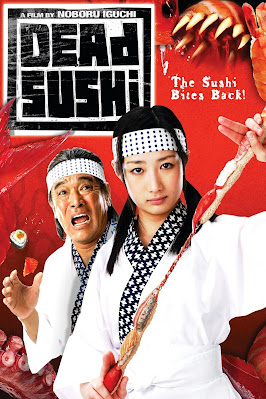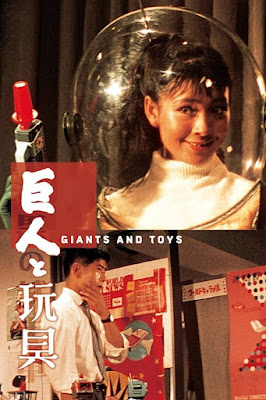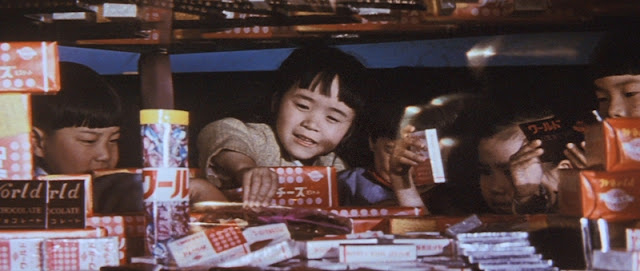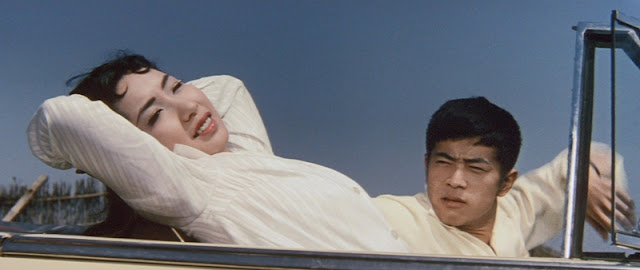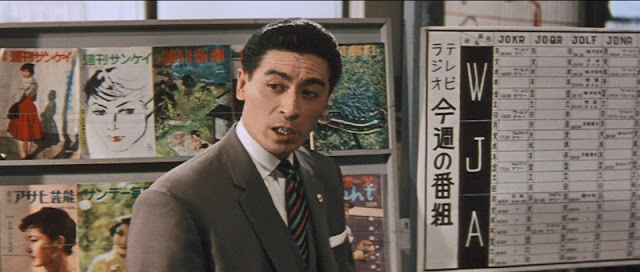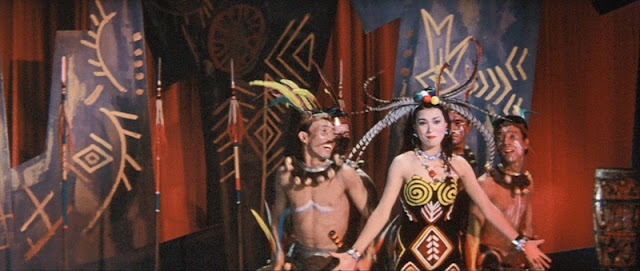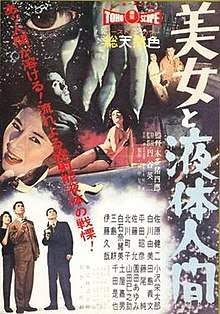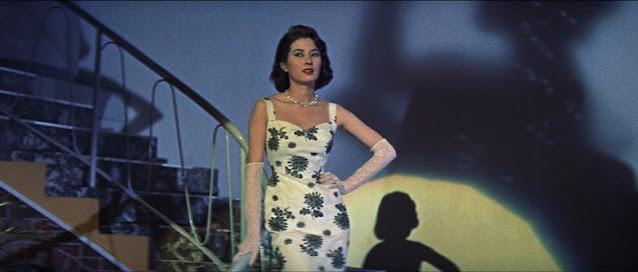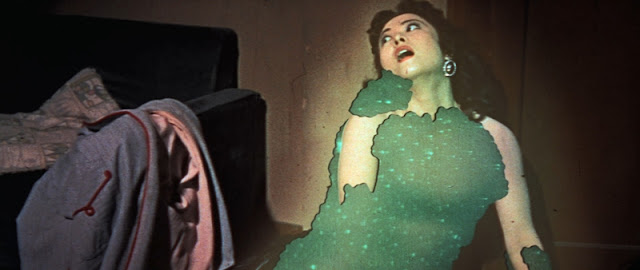The Night is Short. Walk On, Girl (2017) Masaaki Yuasa’s delightful animated film (based on the novel by Tomihiko Morimi) is a surefire cure for what ails you. Over the course of one night, we follow the exploits of unflappable coed Kōhai (meaning “Junior”), as she enters a drinking competition with a group of retirees, foils a middle-aged pervert, and searches for a cherished lost book from her childhood. Throughout the night, she’s pursued by Senpai (an upperclassmen), who hopes to win her affections. The film’s style is as colorful and fanciful as its ebullient protagonist, possessing an irresistible energy. Don’t look for any profound messages, except perhaps to refute George Bernard Shaw’s proclamation that youth was wasted on the young. It’s nothing more or less than a celebration of the joys of being alive – something we could all use right now.
Rating: ****. Available on Blu-ray and DVD
Wool 100% (2006) Writer/director Mai Tominaga’s modern fairy tale concerns two elderly sisters, Ume and Kame (played by Kyōko Kishida and Kazuko Yoshiyuki, respectively) who live alone in a big house, filled with junk. Ume and Kame collect more junk on their daily rounds, meticulously cataloguing their discoveries in scrapbooks. Their life takes an odd turn when a strange young girl (Ayu Kitaura) with a compulsion for knitting red yarn appears in their home. Tominaga’s often whimsical, visually playful film (complemented by a wonderfully eclectic score) examines the prisons we construct for ourselves, through the comfort and trap of ritual.
Rating: ****.
Available on DVD.
Blind Beast (1969) With the help of his mother (Noriko Sengoku), blind sculptor Michio (Eiji Funakoshi) kidnaps an artist’s model Aki (Mako Midori), so he can create his latest form of expression. As Aki descends into Michio’s world, she begins to come around to his way of thinking, where pleasure and pain are intertwined. It’s frequently difficult to watch, but more difficult to look away from this twisted tale of obsession by director Yasuzô Masumura’s (Giants and Toys, Black Test Car), based on a story by Rampo Edogawa. One of the highlights is Michio’s studio, populated with oversized sculptures, representing various parts of the human anatomy. The unforgettable conclusion is at once inevitable and tragic.
Rating: ***½.
Available on Blu-ray and DVD
Intimidation (1960) Two childhood friends, Matakichi and Kyosuke (Kô Nishimura and Nobuio Kaneko), work for the same bank, but their careers have followed divergent paths. While the clever, sweet-talking Kyosuke has followed an upward trajectory, with a promotion to assistant director, his meek colleague has languished as a lowly clerk (much to the ire of his sister, who was dumped by Kyosuke). All is not as rosy as it seems for Kyosuke, who owes a small fortune from fraudulent loans (he must pay a would-be blackmailer 3 million yen, or suffer the consequences). This briskly paced neo-noir from director Koreyoshi Kurahara packs a lot in 65 minutes, with excellent performances by the leads, and a series of surprising plot twists.
Rating: ***½. Available on DVD (part of the Criterion
Eclipse Series The Warped World of Koreyoshi Kurahara)
Séance (2000) Director/co-writer Kiyushi Kurosawa’s (no relation to Akira) slow-burn supernatural thriller (based on Mark McShane’s novel, Séance on a Wet Afternoon) creeps under your skin, with its meditation on the nature of guilt. Kôji Yakusho and Jun Fubuki play emotionally distant married couple Sato and Junko. When a little girl disappears, Junko views this as a perfect opportunity to apply her clairvoyant skills. When their plans go awry, Sato and Junko conspire to retain a semblance of normalcy, but the truth gnaws away at their conscience. Séance is a sobering look at the darkest depths of the human soul, painfully illustrating the disastrous consequences of compromising responsibility for selfishness.
Rating: ***½.
Available on DVD
Cruel Gun Story (1964) Takumi Furukawa’s fast-paced noir thriller features Jô Shisido as Joji Togawa, a career criminal freshly sprung from prison. Against his better judgment, he accepts a challenge to lead a small team to rob an armored car carrying 120 million yen. When he’s betrayed by the mob boss who hired him, he plots his revenge. Joji approaches his work with ice-cold precision, but has a soft spot for his disabled sister. Shisido is perfect as a criminal with a strict code of honor, maintaining his integrity in a world typified by double crosses and other dirty dealings.
Rating: ***½.
Available on DVD (part of the Criterion Eclipse series Nikkatsu Noir)
Gamera the Brave (2005) The latest Gamera flick to date might irritate some hardcore fans accustomed to the exceptional ‘90s trilogy, but I enjoyed this intentionally lower-key, kid-friendly outing. Instead of picking up where the trilogy left off, it’s a reboot of sorts harkening back, in spirit, to the original series of films with the giant turtle, when he was the friend of all children. A young boy, Toru (Ryô Tomioka) discovers an egg sitting atop a glowing red crystal, and takes it home (you can probably guess the rest). This version of Gamera is a smaller, gentler (And dare I say, cuter?) version of the eponymous kaiju hero. It’s somewhat of a letdown that he fights a rather generic enemy, but the human characters (particularly Toru’s father, Kousuke) are fairly well fleshed out. While it’s not exactly the sequel most of us wanted, it’s diverting enough.
Rating: ***.
Available on Blu-ray, DVD and Amazon Prime
Dead Sushi (2012) Keiko (Rina Takeda), a budding young sushi chef, runs away from home after she tires of her father’s criticism. She takes a job as a server at an inn, which is hosting a company retreat. Unbeknownst to Keiko, the deposed company founder, seeking revenge against his former teammates, turns his experimental serum on their sushi, with deadly consequences. Writer/director Noboru Iguchi keeps everything suitably over the top (if you’re familiar with some of his other work, including Machine Girl and Robogeisha, then you likely know what you’re in for). Expect lots of tasteless sight gags (with an occasionally clever joke thrown in, for good measure) and a surprising amount of heart. You might never look at sashimi the same way again.
Rating: ***.
Available on Blu-ray, DVD and Tubi
Monster Seafood Wars (2020) A young biochemist develops a substance that will make animals grow to gargantuan proportions, resulting in an ordinary octopus, squid and crab transforming into kaiju. While they threaten the population of Japan, they have an unintended side effect – they’re also delicious. Writer/director Minoru Kawasaki’s (The Calamari Wrestler, Executive Koala) applies his signature goofy, no-budget approach to his kaiju tale. It’s a couple of notches below his best, but it’s not without its moments. It never takes itself too seriously, gently poking fun at tokusatsu movies, while embracing them. The pacing, however is inconsistent, and the story (which is probably a bit too deadpan for its own good) could have used a few more jokes.
Rating: **½.
Available on Blu-ray, DVD and Amazon Prime



